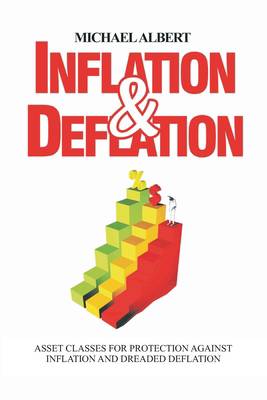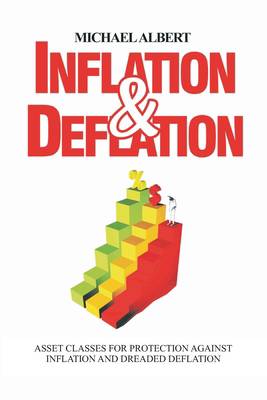
- Retrait gratuit dans votre magasin Club
- 7.000.000 titres dans notre catalogue
- Payer en toute sécurité
- Toujours un magasin près de chez vous
- Retrait gratuit dans votre magasin Club
- 7.000.0000 titres dans notre catalogue
- Payer en toute sécurité
- Toujours un magasin près de chez vous
Inflation and Deflation
Asset Classes for Protection against Inflation and dreaded Deflation
Michael AlbertDescription
Are You Ready for a Return of Long-Term Inflation and deflation. Like in the 1970s? Where and how should you put your money? Is inflation and deflation a friend or foe as you build your wealth? Who stands to gain from this Wealth Transfer?
We shouldn't be surprised if high inflation or low deflation returns to the developed countries. Inflation is a predictable outcome of the current economic malaise and the policies we have adopted, based on historical similarities. Fiscal irresponsibility, high levels of government and private sector debt, and ultra-loose monetary policies are all likely to result in an inflationary phase. While we can't predict when a deflation or inflation risk event will occur, we can estimate the likelihood of it happening in general.
Inflation and Deflation, asset classes for protection against inflation and dreaded deflation. It explains what's causing the worst inflationary storm in almost four decades, one that's grabbing headlines and shaking Americans' wallets. The cost-of-living boom that has occurred since the COVID outbreak has sparked fears of a recurrence of the "Great Inflation" of the 1970s. Some fear a return to the kind of hyperinflation that tore many countries apart during the Weimar Republic. Is this correct? What should be done if this is the case? What should we do to get ready for the future?
Inflation and deflation provides answers to these and other concerns in a lively conversation that draws on the unique knowledge of Michael Albert, head of Hill Foundation and renowned for his financial and economic views.
This book should serve as the beginning of a journey to better understand the dangers of high inflation and dreaded deflation and how they affect your business and personal life. Perhaps the journey will take you one step further, allowing you to turn inflation and deflation risks into significant opportunities, as several best practice examples have done in previous inflation and deflation eras.
Companies and people who are concerned about inflation and deflation risks can currently choose from a variety of deflation and inflation tactics. This book discusses many of these ideas and concepts. As a result, the author's advice is straightforward: plan for the worse and hope for the best. Important risk management methods should not be based on hope and a gamble that everything will turn out great. When it comes to inflation concerns, the cost of being incorrect is extraordinarily significant.
Spécifications
Parties prenantes
- Auteur(s) :
- Editeur:
Contenu
- Nombre de pages :
- 116
- Langue:
- Anglais
Caractéristiques
- EAN:
- 9798836807153
- Date de parution :
- 17-06-22
- Format:
- Livre broché
- Format numérique:
- Trade paperback (VS)
- Dimensions :
- 152 mm x 229 mm
- Poids :
- 163 g

Les avis
Nous publions uniquement les avis qui respectent les conditions requises. Consultez nos conditions pour les avis.






